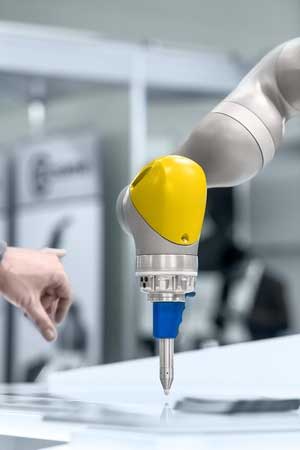
All areas of engineering are evolving and developing and we like to keep an eye on what’s going on, reporting from time to time on innovative and sometimes controversial developments.
When it comes to robotics most of the things we’ve written about have been ground breaking developments that have meant that safety can be increased or that major improvements in quality of life can be achieved.
We even wrote about whether increased automation means that less skill will be required in the future. It seems the answer is no – operators still need to understand what they’re doing, why they’re doing it and what could go wrong. However, automation can and does help improve efficiency.
There’s always research going on in various areas and for many reasons; safety, efficiency and cost to name but a few. But the ones to hit the headlines are normally those ‘wow’ type innovations like bionic limbs, which are fantastic to read of course, and change people’s lives. However some of the research that goes on may not change individual lives but can have a massive impact on industry.
We noticed these two articles this week, simply because on the face of it, when you see the headline topics of aviation and farming, you wonder how different or similar the reasons are for the use of robotics. It turns out they both have the same aims (efficiency and cost improvements), but both impact their industries in different ways.
Aviation
The use of robotics has been hugely beneficial in the auto industry with repetitive tasks being completed more efficiently. It’s hoped the same success can be found in aviation. However, the tasks for robotics in the aviation industry are far different from those in the world of cars. When it comes to cars about 1000 are manufactured every day and the repetitive tasks take about 40 seconds a time. In aviation, companies like Airbus produce one aircraft a day and the tasks last much longer. More collaborative techniques are required where the human and machine are working together to improve production and efficiency while maximising safety etc.
This article has more detail on the research and development in to robotics in the aviation industry.
Farming
A project is using 3D camera technology to develop a robotic system that can harvest broccoli.
Why broccoli you ask? It seems that broccoli is one of the world’s biggest vegetable crops and is almost entirely harvested by hand, making it costly to harvest.
The aim of the project is to see whether the cameras and robotics can identify and select only the broccoli that is ready for harvesting. If this can be achieved, there will be a big impact on the production costs. The long term aim of the project is to improve the efficiency of food production as well as reducing the amount of food waste.
Read the full article here.
Are you involved in robotics? What’s your view about future changes in industry?
Image Copyright: svedoliver / 123RF Stock Photo
This site uses Akismet to reduce spam. Learn how your comment data is processed.


 Mail:
Mail: 




Leave a Comments